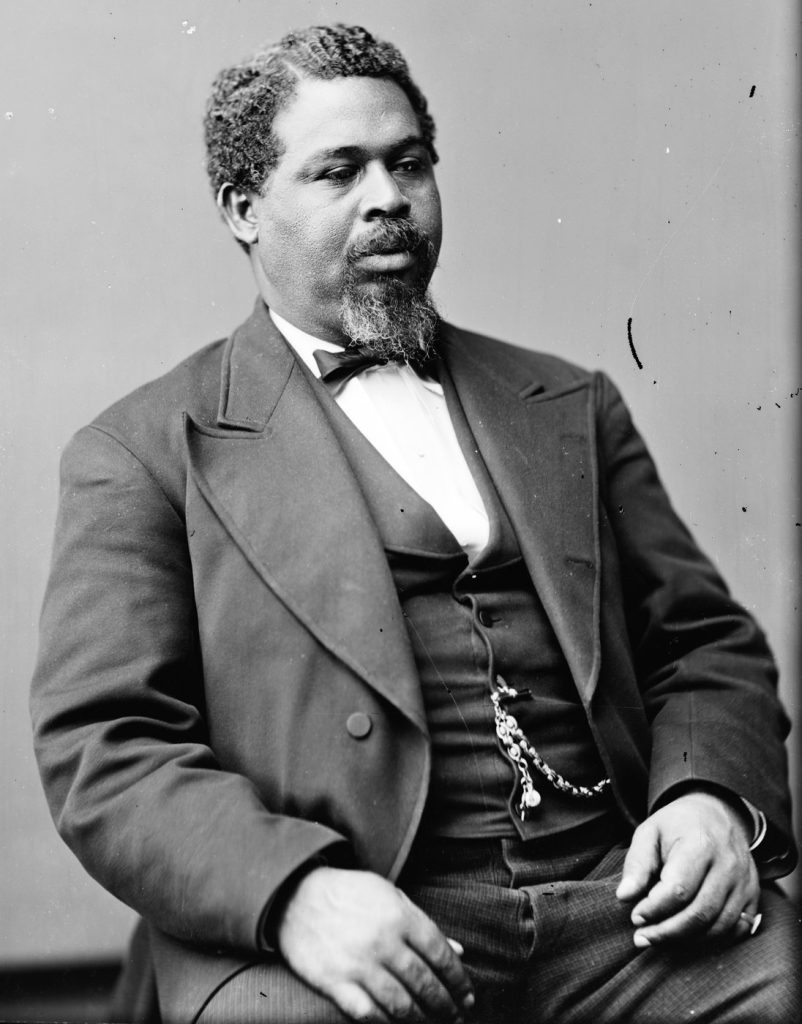South Carolina statue honoring Black hero Robert Smalls will stare down a segregationist

Posted Jan 9, 2025 02:30:50 PM.
Last Updated Jan 9, 2025 02:46:15 PM.
COLUMBIA, S.C. (AP) — A group studying where to put South Carolina’s first Statehouse monument to an individual African American has decided Robert Smalls’ statue should be staring down a notorious white supremacist who dismantled most of the former slave’s work after the Civil War.
The Smalls statue would stand along the sidewalk where thousands of children on field trips walk from buses to the Statehouse each spring. Backers hope that will spur conversations about a man who lived a heroically full life.
Born into bondage, Smalls stole a Confederate ship during the Civil War to sail his family and a dozen others to freedom. He spent a decade in the U.S. House, helped rewrite South Carolina’s constitution to allow Black men equality after the Civil War and then put up a valiant but doomed fight when racists returned to power and eliminated nearly all of the gains Smalls fought for.
The proposal approved unanimously Wednesday by the Robert Smalls Monument Commission now goes to the General Assembly while another group works to raise the millions of dollars needed for Smalls to join the more than two dozen statues and memorials — many to Confederates and other racists — that dot the site where a capitol building has sat for more than 230 years.
After the vote, the sponsor of the bill creating the committee, white Republican Rep. Brandon Cox, and one of its first and most ardent backers, Black Democratic Rep. Jermaine Johnson, walked to the proposed site of the statue. They spoke a few minutes to reporters and then were suddenly overcome by emotion and hugged each other tight.
“We’re sitting here making history together as Black, white, tall, short, Republican, Democrat — it’s an amazing thing,” Johnson said.
“This is South Carolina right here,” Cox said.
Robert Smalls was born in 1839 in Beaufort, South Carolina, and died in 1915 in his hometown a free, but somewhat forgotten man tossed aside by a Southern society determined to keep Blacks inferior.
But Smalls’ story was too bold and amazing to fade away.
In May 1862, during the Civil War, the steel-nerved ship pilot waited for the ship’s white Confederate crew members to leave the vessel for an evening out. Smalls then donned a Confederate uniform, hat pulled low over his dark brow. He mimicked hand signals and whistle toots to get through Confederate checkpoints in the pale moonlight before surrendering the ship to nearby Union soldiers, having secured his family’s freedom and that of the other enslaved people on board.
Smalls helped the Union for the rest of the Civil War. After the South lost, Smalls went on to serve in the South Carolina House and Senate before being elected to the U.S. House. He bought his master’s house in Beaufort in part with money made from turning the Confederate ship over to Union forces, then allowed the man’s penniless wife to live there when she was widowed.
Smalls would see a new South Carolina constitution in 1895 wipe out African Americans’ right to vote in a convention led by “Pitchfork” Ben Tillman.
Tillman was a governor and U.S. senator who bragged about leading groups of white people who killed Black men who had been trying to vote during the 1876 election, which led to the end of Reconstruction, the return of all-white rule and the collapse of everything for which Smalls had worked.
Smalls’ statue, if approved, will face Tillman’s direction, staring him down from about a football field away.
Some civil rights groups have called for tearing down statues of Confederates and white supremacists like Tillman, but state law requires legislative approval to remove them or even add language to the monuments detailing their racist deeds, which has been an impossible task in a state dominated by conservative Republicans.
Sculptor Basil Watson’s proposal is Smalls dressed in a tuxedo as a congressman at the height of his power. It was chosen over an idea that included multiple versions of Smalls as a riverboat captain and lawmaker.
A statue of one person at the height of power matches the motif of other Statehouse statues honoring men including segregationist U.S. Sen. Strom Thurmond, Confederate general and former Gov. Wade Hampton and President George Washington, who will also be in the sightline of the Smalls statue, said Mike Shealy, the chairman of the Robert Smalls Monument Commission.
“The simplicity of the statue of one man on a pedestal who is equal to the other people who are memorialized on our Statehouse grounds is the best depiction,” Shealy said.
A design also allows officials to begin raising money. Cox and Johnson believe it will cost millions to do it right. The more money raised, the taller the statue and the more intricate the design.
“Heck, I’d put a 24-carat gold statue up if we could raise $100 million,” Johnson said.
On one side of the statue’s base will be facts about Smalls’ life. On another will be a quote from Smalls from 1895 when Tillman and other whites took over the state constitutional convention and tried to put Smalls and other African Americans back in their place.
“My race needs no special defense, for the past history of them in this country proves them to be the equal of any people anywhere. All they need is an equal chance in the battle of life,” Smalls said.
Jeffrey Collins, The Associated Press








